Spondylolisthesis – What Is That?
To download a copy of this week’s newsletter, please click here.
Bay Area Chiropractor Comments: Ashley was competing in a gymnastics tournament last year and during one of her floor routines, noticed a sharp pain in her low back after performing a series of back hand springs. She said she landed crooked on the last of four back hand springs which resulted in immediate pain in the middle of the low back at the beltline. She has had pain in the low back before and initially, didn’t think this was any different from past episodes but when the pain didn’t improve after a week, she asked her parents if she could see their chiropractor for an adjustment. Her chiropractor took her history and was alerted by the mechanism of injury – the rapid onset of pain after bending backwards and landing crooked during her routine. The low back was carefully examined and during the range of motion testing, Ashley’s backward bending test was very painful and limited in motion. When bending backwards at an angle with pressure applied in the low back, sharp pain stopped the test immediately. Her neurological tests were normal and she could bend over and touch her toes – in fact, that felt good. Her chiropractor had a strong suspicion of what had happened and ordered an x-ray to see if the preliminary diagnosis was accurate. The x-rays looked normal but with the history of extreme backward bending and immediate pain onset, a bone scan was ordered which was positive for a stress fracture in the back part of the vertebra. Unfortunately, this meant no gymnastics for 3 months and the use of a low back brace was recommended. The good news is that the back pain was gone within a month and follow-up x-rays 3 months later did not reveal a visible fracture line in the vertebra. Ashley was able to resume gymnastics and competed with success and no low back pain in Houston.

So, what is spondylolisthesis? As depicted in the side view low back x-ray (left), it is the sliding forward of one vertebra over another (see arrow). It occurs in about 7% of the western population and up to 30-50% in cultures that carry their young on their back (like a back pack). It is reported that most people who develop spondylolisthesis acquire this between ages 6 and 16 due to a developmental weakness in that part of the spine, though the cause can be traumatic, like in Abby’s case where rapid, uncontrolled backward bending occurs. It can also gradually occur over time (called “degenerative”), usually not found before age 50-60, where no single event can be recalled by the patient. There is also a congenital type that can be hereditary where one is born with it, though most authorities feel it is acquired at an early age. The good news is that it is often stable and does not require surgery. In the more severe case, the nerves and/or spinal cord can get pinched in which case surgery is necessary. The symptoms would then include leg pain, weakness, and/or numbness with or without significant low back pain. Most cases however, can be successfully managed without surgery and do not compromise the nerves or cord.
Chiropractic has been found to be very successful in managing patients with spondylolisthesis as the pain generator is often above or below the slipped vertebra. In fact, in one report, chiropractic was found to be more beneficial than medical care for this condition (Mierau D, et.al., J Manip Physiol Therap 1987;10:49-55).
Dr. Ward Beecher practices at Beecher Chiropractic Clinic at 1001 Pineloch, Ste 700 Houston, TX 77062. You can schedule an appointment at BeecherChiropractic.com or by calling (281) 286-1300. If you have any questions regarding this blog, please comment below!
Does the Use of a Low Back Support or Brace Really Make a Difference?
To download a copy of this week’s newsletter, please click here.
Clear Lake Chiropractor Comments: “Do you think a back brace will help my condition?” This is a question that is frequently asked of many health care providers who treat low back pain. The answers typically vary, as there is support for and against the use of a brace when low back pain is present.
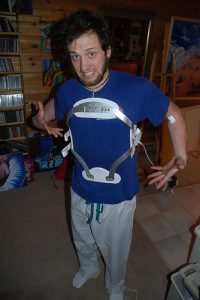
The use of back braces had been considered a “standard” in the treatment of patients with LBP for many years. One argument against using back braces centers around becoming “dependent” either physically or mentally on its use and this has long been a concern among health care providers. Braces are particularly helpful when the patient cannot stop performing needed activities, such as work. The brace helps to reinforce proper bending and lifting by minimizing rotation and side bending. The patient needs to also take breaks from the brace when it is not needed or during periods of rest. Ultimately most people will not need the brace as the problem is resolved and supporting muscles are developed to prevent aggravation.
There are many types of back braces. Some are narrow and are particularly favored when frequent bending and/or twisting movements are required by a job, sport, or other daily activity. Other braces are taller in the back and taper in the front, which give better support but still allow some bending / twisting movements. Some braces are more rigid and can actually stop movement in certain directions. These types include a hard, rigid surface that is placed in the area of the back where movement is not desired. These are used at times when there are fractures of the spine, after spinal surgery and in scoliosis bracing. Some braces are to be worn low on the pelvis to support that area, while most are placed in the center of the low back region. There are also rib belts sometimes used when ribs fracture, soft and rigid neck braces sometimes used after car accidents, and braces for the arms or legs. The decision to use a brace rests on the degree of injury and the patient’s ability to avoid certain activities or positions. When the injury is significant and/or the patient cannot control his/her activities (such as work), then the use of a brace may be one of the most important treatment approaches for that patient. It’s similar to having stitches when a deep or wide cut occurs. Ask us about the use of supports, braces, or belts if you or your family or friends are suffering with low back pain.
Dr. Ward Beecher practices at Beecher Chiropractic Clinic at 1001 Pineloch, Ste 700 Houston, TX 77062. You can schedule an appointment at BeecherChiropractic.com or by calling (281) 286-1300. If you have any questions regarding this blog, please comment below!
What Makes Low Back Pain So Common?
Clear Lake Doctor Comments: Low back pain (LBP) is one of the most common types of pain involving the musculoskeletal system. LBP sufferers may sometimes miss work or be unable participate in desired activities, social outings, and the like. It can be so disabling that out of desperation, they visit the ER.
 There are many causes of LBP. Some of the obvious include over lifting/carrying, performing a task for too long or with too many repetitions, and sitting or standing in one position for too long. However, frequently LBP seems to occur for no apparent reason, or at least none that can be clearly identified. One of the most basic causes of LBP is simply standing on two, rather than four legs. When comparing a 4-legged to a 2-legged subject, arthritis of the spine and disc degeneration occurs much earlier in those of us with two legs. This is due partially because 2/3rds of our weight is supported by the low back and pelvis. In addition, vertical loading occurs in the 2-legged subject whereas the load is distributed between four legs in a horizontal fashion in the 4-legged species. Other less obvious causes of LBP include physical characteristics such as flat feet (fallen arches), a short leg resulting in a tipped pelvis, carrying too much weight, being out of shape/weak muscles, as well as hereditary factors. Non-physical characteristics include diet, exercise participation, lifestyle, stress and other psychological conditions such as depression, anxiety, bipolar disorders, and others. Hence, treatment must address the entire person, not just the low back since often, several of the characteristics mentioned here are present and often participating in the cause for LBP.
There are many causes of LBP. Some of the obvious include over lifting/carrying, performing a task for too long or with too many repetitions, and sitting or standing in one position for too long. However, frequently LBP seems to occur for no apparent reason, or at least none that can be clearly identified. One of the most basic causes of LBP is simply standing on two, rather than four legs. When comparing a 4-legged to a 2-legged subject, arthritis of the spine and disc degeneration occurs much earlier in those of us with two legs. This is due partially because 2/3rds of our weight is supported by the low back and pelvis. In addition, vertical loading occurs in the 2-legged subject whereas the load is distributed between four legs in a horizontal fashion in the 4-legged species. Other less obvious causes of LBP include physical characteristics such as flat feet (fallen arches), a short leg resulting in a tipped pelvis, carrying too much weight, being out of shape/weak muscles, as well as hereditary factors. Non-physical characteristics include diet, exercise participation, lifestyle, stress and other psychological conditions such as depression, anxiety, bipolar disorders, and others. Hence, treatment must address the entire person, not just the low back since often, several of the characteristics mentioned here are present and often participating in the cause for LBP.
Because many of these characteristics are not properly attended to, LBP tends to be recurrent, where multiple episodes come and go over time. In years past, health care providers would focus the majority of their attention on the physical characteristics of LBP and when treatment results was ineffective, the blame was placed on the psychological aspects for which little, if any, treatment was offered. However, over the last 20 years, the shift towards treating the whole person or, adopting the biopsychosocial model (bio- = physical, psycho- = mental, and social = how LBP is perceived and affects daily social interaction) has been emphasized as the appropriate approach when managing patients with low back pain. No longer should the psychological aspect be ignored but rather, identified and treated so that this significant barrier to recovery can be properly managed.
Regarding treatment, unless someone presents with a “red-flag” which, for LBP sufferers include cancer, fracture (especially unstable fractures), cauda equine syndrome (spinal cord pinching resulting in bowel / bladder control loss), or infection, immediate/emergent care is not required. A careful health history followed by appropriate tests can usually identify these “red flags.” Otherwise, surgery for LBP is not recommended until at least 4-6 weeks of treatment with non-surgical approaches are first utilized and, an identifiable “lesion” can be identified that clearly is causing the presenting complaints and clinical findings. Chiropractic has an obvious advantage over specialty care when considering non-surgical treatment of LBP. Both physical and emotional issues are identified and a “team” approach with other health care providers when required is ordered. Moreover, all the international guidelines published for treating LBP recommend spinal manipulation BEFORE most of the other non-surgical approaches are tried due to medication side-effects and, the successes reported in many studies where spinal manipulation is performed.
Dr. Ward Beecher practices at Beecher Chiropractic Clinic at 1001 Pineloch, Ste 700 Houston, TX 77062. You can schedule an appointment with your Houston chiropractor or by calling (281) 286-1300. If you have any questions regarding this blog, please comment below!
Best Sexual Positions for Back Pain
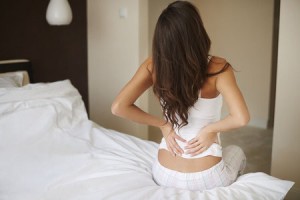 Clear Lake Chiropractor Comments: Back pain isn’t just one of the most common reasons for people to miss work; it can also affect your sex life. But new guidelines based on how the spine moves during intercourse could help. A frequently asked question is “How can I have sex without causing further damage or pain to myself or my partner?” People are sometimes embarrassed to ask the question, but it is information that they need.
Clear Lake Chiropractor Comments: Back pain isn’t just one of the most common reasons for people to miss work; it can also affect your sex life. But new guidelines based on how the spine moves during intercourse could help. A frequently asked question is “How can I have sex without causing further damage or pain to myself or my partner?” People are sometimes embarrassed to ask the question, but it is information that they need.
First, people need to understand that there is an emotional aspect to back pain. Back pain can cause stress. The partner who does not have back pain can have a lack of understanding and perceive the stress and reluctance to have sex as a personal rejection and/or resentment. Research has shown to taking it slow and being patient is beneficial. Start off with a light massage, shower or even just gently rubbing in a soothing pain lotion to help loosen the muscles.
Back pain affects 8 out of 10 people at some point in their lives, and low back pain is the main reason for disability. Regarding sex, doctors used to recommend the spooning position for people with back pain, despite a lack of scientific evidence to support it. Also, a sex position that’s appropriate for one type of pain, might not work for another type of pain.
For men who have an increase in pain while bending forward or after sitting for a period of time, the best positions will be a modified “doggy-style” position while their partner supports their weight on either their hands or elbows. If pain is increased by flexion and motion, then a modified “missionary” position is suggested where the man supports his weight on his hands and his partner flexes their hips and knees. If extension causes back pain, it is suggested that this position is modified so that his weight is supported on his elbows. Another position that is suggested for men with extension related pain is the side position or “spooning”. This will help to minimize the pain from extension and minimize the weight bearing.
For women who have an increase in pain when they sit too long or flex forward to touch their toes the best position are ones that minimize spinal flexion like spooning or “doggy-style” with their weight supported on their hands or elbows. If the pain is increased with extension or arching their back then the best position is a modified “missionary” position with their hips and knees flexed.
The good news is that healthy sexual relations will help to minimize stress which ultimately helps to reduce back pain.
Dr. Ward Beecher practices at Beecher Chiropractic Clinic at 1001 Pineloch, Ste 700 Houston, TX 77062. You can schedule an appointment at BeecherChiropractic.com or by calling (281) 286-1300. If you have any questions regarding this blog, please comment below!
Did You Know This About Low Back Pain?
To download a copy of this newsletter, please click here.
Clear Lake Chiropractor Comments: If you have low back pain (LBP), you are certainly not alone. Almost everyone at some point has back pain that interferes with work, daily activities, and/or recreation. Americans spend at least $50 billion each year on LBP. It is the most common cause of job-related disability and a leading contributor to lost work time. Back pain is second to headaches as the most common neurological condition in the United States. Fortunately, most occurrences of LBP go away within a few days. Others take much longer to resolve or lead to more serious conditions (1).
There are two types of low back pain – acute and chronic. Most episodes of acute LBP last from a few days to weeks, are not neurological and usually do not carry a high level of surgical risk. The 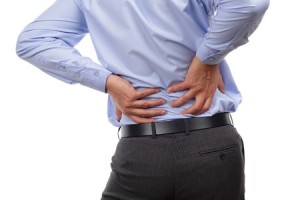 cause of LBP can be difficult to isolate because often, while the cause is cumulative where multiple events over time, the last activity the patient recalls is “bending over for a pencil.” This, by itself is not likely to cause an acute onset of LBP. Low back pain can be caused by trauma such as sports injuries, work around the house such as garden work, car accidents, and others. Chronic low back pain, by definition, is LBP that lasts more than 3 months and the cause can be more difficult to identify and is often cumulative and superimposed on a prior condition such as degenerative disk or joint disease. A real problem is the rate of recurrence or, chronic, recurrent low back pain where pain may subside but returns at various rates of frequency and duration. This category affects a high percentage of the population and represents the true challenge in spine care management.
cause of LBP can be difficult to isolate because often, while the cause is cumulative where multiple events over time, the last activity the patient recalls is “bending over for a pencil.” This, by itself is not likely to cause an acute onset of LBP. Low back pain can be caused by trauma such as sports injuries, work around the house such as garden work, car accidents, and others. Chronic low back pain, by definition, is LBP that lasts more than 3 months and the cause can be more difficult to identify and is often cumulative and superimposed on a prior condition such as degenerative disk or joint disease. A real problem is the rate of recurrence or, chronic, recurrent low back pain where pain may subside but returns at various rates of frequency and duration. This category affects a high percentage of the population and represents the true challenge in spine care management.
As people age, their bone strength and muscle stretch, strength and tone usually decreases due to lack of activity. When the disks begin to lose fluid and flexibility, their ability to cushion the vertebrae and function as “shock absorbers” also decreases. Disks can tear, bulge, and/or herniate which results in localized LBP and/or radiating pain that follows the course one or more of the 31 pairs of nerve roots (eg., “sciatica” down the back of the leg). Soft tissues such as joint capsules and ligaments lose their capacity to stretch and can tear more easily, resulting in a sprain or strain (muscle/tendon injury). Other conditions that either cause or contribute to LBP include arthritis, obesity, smoking, pregnancy, stress, poor posture and/or physical health, and can lead to unsatisfied patients if these co-contributors are not properly identified and discussed. Less commonly, LBP can be caused by a more serious condition such as cancer, fracture, infection, spinal cord compression, and various internal conditions (3). Emergency care may be indicated in these circumstances.
At Beecher Chiropractic, we will perform a complete examination, consider other contributing causes, and will treat the problem(s) causing the LBP condition. If needed, working with other allied health care providers will be arranged. Exercise, dietary recommendations, ergonomic or work modifications, spinal manipulation, and modalities will all be considered to help eliminate or control of the LBP. Methods of self-managing the LBP will be emphasized.
Dr. Ward Beecher practices at Beecher Chiropractic Clinic at 1001 Pineloch, Ste 700 Houston, TX 77062. You can schedule an appointment at BeecherChiropractic.com or by calling (281) 286-1300. If you have any questions regarding this blog, please comment below!
Do You Really Need an X-Ray if You Have Back Pain?
Chiropractor Near Clear Lake City Comments: Most chiropractic patients have spine x-rays taken of their lumbar. Since x-rays do carry a very small risk of tissue damage, this risk needs to be outweighed by benefits. So, how are x-rays used in our clinic?
First, spine x-rays can tell us about medical conditions that may require referral to another health care provider such as a spine tumor or an infection. Fortunately, these diseases are very rare, but they do need to be considered in every patient, especially those who may have certain “red flags” such as back pain at night or rest, or if there is also a fever. In addition, certain severe traumas (like a fall) can produce fractures. In an older adult with osteoporosis, or someone taking steroid medications over years, even a minor trauma event can be enough to cause a break, because the bone is in a weakened condition.
After these very rare conditions are ruled out, your x-rays can provide important information about your anatomy and physical posture. For example, curvatures of the lumbar spine, such as scoliosis, are virtually undetectable without a spine x-ray, and without these you would not know if you would need scoliosis treatment. If we know how your spine is deviated, this information can help direct the adjustment more specifically. Sometimes leg lengths are uneven and a person may require an orthotic (arch support) or heel lift to level the foundation for your spine. About one in ten patients will have an unequal leg length of a centimeter or more.
In terms of the bone anatomy, x-rays can show the planes and angles of the discs between bones and whether any degeneration is present or if you have any herniated discs. If the degeneration is advanced, then a natural bone fusion may be present. It should be obvious that if the spinal anatomy does not allow movement or if the joints are literally fused movement is impossible, then chiropractic adjustments are not appropriate.
Spine x-rays can also show us how one area of the spine mechanically compensates for a deviated area below. Sometimes, pain may be present at compensatory areas but without knowledge of the cause of this deviation, care may be less optimum. Just as the lumbar spine may compensate for a pelvic problem, so to can a neck condition be caused by abnormal postural lower down the spine. The x-rays can show us how case management needs to be altered to reflect your individual needs.
In any case, x-rays are important to reach an accurate diagnosis, which is the first step on the road to recovery and regaining your vitality and quality of life.
Dr. Ward Beecher practices at Beecher Chiropractic Clinic at 1001 Pineloch, Ste 700 Houston, TX 77062. You can schedule an appointment the best chiropractor in houston by calling (281) 286-1300. If you have any questions regarding this blog, please comment below!
Is Low Back Pain Serious?
To download a copy of this week’s newsletter, please click here.
Clear Lake Doctor of Chiropractic Comments: Back problems can cause a good deal of worry and for good reason. Any problem that doesn’t go away on its own in a reasonable period of time should be a cause for concern. Rarely, severe low back pain can be caused by tumors and other destructive processes, so it’s important to have these serious conditions ruled out with a thorough examination and x-rays or other imaging.
The other serious aspect of back pain, much more common than a spinal cord tumor, is how it can affect your quality of life, often with devastating consequences.
Research has shown how disabling severe back problems can be. In terms of quality of life, the decrease can be even more than that seen with heart and lung problems.
This may not seem correct at first glance, but if you think about a back problem making you unable sit or function at work, or basically being able to enjoy life, then it becomes more understandable.
The trouble is, many of us think lying on the couch will do the trick, or taking aspirin every day is a good long-term solution.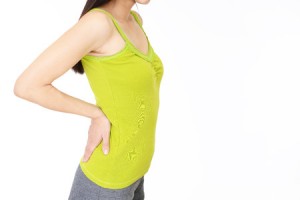
Sprain subluxations that displace the joints of your spine are sometimes referred to as mechanical disorders. These can be detected by analyzing how your spine moves in a precise manner. Sometimes x-rays can show displacements of the lumbar vertebrae or pelvic bones. X-rays are taken from two angles to see the alignment of the spinal joints. X-rays can also show bone destructive or degenerative processes that help to diagnose your problem, and show if adjustments are indicated.
We direct our care at improving the posture and mobility of the spine as a way to speed recovery. We find that just addressing the pain with medications or adhering to strict bed rest can be counter productive. The adjustments are applied in a careful and specific manner. As the loads on the spine are more equalized and as joints begin to exhibit more flexibility, the body is placed in a more optimal environment for healing. Since self-care is also integral to our approach, we will encourage proper stretching and exercises to help maintain and extend what we can do in the clinic.
Dr. Ward Beecher practices at Beecher Chiropractic Clinic at 1001 Pineloch, Ste 700 Houston, TX 77062. You can schedule an appointment at BeecherChiropractic.com or by calling (281) 286-1300. If you have any questions regarding this blog, please comment below!
Low Back Pain: Could Your Feet or Hips Be at Fault?
To download a copy of this newsletter, please click here.
Houston Chiropractor Comments: The body is an interconnected whole and needs to be looked at as such in order to get at the root of a spinal problem. We are all familiar with low back trauma, bending and stooping in awkward positions to lift something from a trunk, or the slip and fall on ice. In these examples, it’s easy to see how the trauma preceded the low back pain.
But sometimes pains in the low back are not so easy to figure out. One area of the spine could be compensating in posture for another, inhibiting a vertebral joint’s ability to fully recover. Or maybe you’re suffering from the cumulative affects of microtrauma over time.
Such is the short leg; about 1/10 people will have an anatomic difference in leg length of up to one centimeter. This short leg causes the pelvis to incline to one side providing an uneven support for  the base of your spine. It’s a little like walking with one foot in a small ditch. The uneven pelvis then causes a lumbar scoliosis, which must be further compensated from above.
the base of your spine. It’s a little like walking with one foot in a small ditch. The uneven pelvis then causes a lumbar scoliosis, which must be further compensated from above.
But a short leg can also be functional, due perhaps to a small or collapsed arch of the foot. This can account for up to 5 mm of leg length difference. Do you have a history of having flat feet or have you ever sprained one of your ankles? The sprained ankle can damage ligaments to such a degree that the normal arch of the foot can no longer be maintained.
Depending on the degree of the problem we may be able to help your low back pain by correcting a problem in the foot. Many in-shoe orthotics are available to correct a fallen arch. If the problem is very severe, you may also need a visit to a podiatrist.
In any case, it’s important to consider the foundation of a spinal problem, and it can be as simple a problem as bad foot posture that is affecting how your low back functions. Also, problems in the sacroiliac joint or hips can affect how the lower spine moves.
So pay attention to where the pain is located, but also consider that other joints nearby may be affecting your recovery as well.
As a doctor of chiropractic, my office is fully equipped to handle problematic low back conditions that don’t seem to clear up in response to what you’ve tried in the past. Have your feet been checked? Has someone looked at your posture carefully?
Dr. Ward Beecher practices at Beecher Chiropractic Clinic at 1001 Pineloch, Ste 700 Houston, TX 77062. You can schedule an appointment at BeecherChiropractic.com or by calling (281) 286-1300. If you have any questions regarding this blog, please comment below!
Have You Lost Work Time Because of Your Low Back Pain?
To download a copy of this week’s newsletter, please click here.
Bay Area Chiropractor Comments: “I can’t believe how much my low back hurts! I don’t know if I can go to work with it like this!” Does this sound familiar? Have you ever missed work because of low back pain? Well, if you have, you’re certainly not alone! In fact, over 80% of the general population seeks some type of health care provision at some point in life because of low back pain and many of those lose work time. Lost work time is often associated with not being able to tolerate certain positions such as prolonged sitting, standing, bending, twisting, reaching, or combinations of these. Sometimes, just getting to work is next to impossible as the car ride alone may intolerable! There is nothing more depressing than not being able to move due to the sharp knife-like feeling in the back every time you try to change positions. 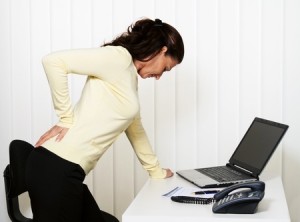
However, it’s one thing to lose a day or two or even a week of work but what about those that can’t work for longer time periods, like several weeks or even months? This can become life altering as avoidance of moving for fear of that knife-like sensation in the back can quickly lead to muscle weakening, weight gain, lethargy, depression, and a host of other negative residuals. Many articles have been published in the past that tried to identify ways determine early on in the course of back treatment, who might be at greatest risk of not improving or becoming disabled. The term, “yellow flags” has been used to describe such factors and some success in identifying those prone to becoming disabled has been reported. In May 2009, another attempt to identify injured workers who were at risk for becoming disabled or, not being able to return to work for at least 3 months was published. Of the 346 injured workers that were followed for 6 months after the sick leave period began, 47% failed to return to work. There were five questions found to adequately screen those who were not able to return to work or were at greatest risk of becoming disabled. The 5 questions include:
- Do you expect to return to work within 6 months?
- How much does the pain interfere in your daily activities?
- It is not advisable to be physically active?
- Do you feel generally nervous?
- Do you feel generally scared?
The good news is that chiropractic manages these types of acute back pain quicker and better than any other form of health care. This is reflected by the highest percentage of consumers seek chiropractic over any other form of alternative health care for back pain relief according to the May, 2009 issue of Consumer’s Report.
We strive to provide the highest quality care and follow evidence and “best practice” approaches at our clinic and look forward to helping our patients through difficult times like this.
Dr. Ward Beecher practices at Beecher Chiropractic Clinic at 1001 Pineloch, Ste 700 Houston, TX 77062. You can schedule an appointment at BeecherChiropractic.com or by calling (281) 286-1300. If you have any questions regarding this blog, please comment below!
Low Back Pain and the Hamstrings
To download a copy of this week’s newsletter, please click here.
Houston Chiropractor Comments: Have you ever considered how important your hamstrings muscles are in relationship to the low back? Most people do not think about those tight muscles on the back of the upper leg / thigh as having much to do with low back pain (LBP). However, it is one of the most important muscles groups to keep loose both as a means of improving current low back trouble as well as preventing future LBP. Think of the hamstrings as a stabilizing guide wire that keeps us upright. When we bend over with our knees straight, we can feel the hamstrings gradually tighten, often limiting us from reaching our toes. When the hamstrings are too tight, some of us can hardly reach past our kneecaps as we bend over. We then (unconsciously) bend our knees to put slack in the hamstrings so we can easily reach the floor.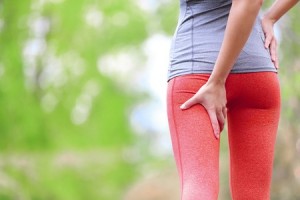
The low back is only so flexible and in reality, most of our ability to touch our toes comes from our hip joints. In fact, after scoliosis surgery where metal rods are placed on both sides of the spine, these patients will often make up for the loss of low back movement by increasing hip motion and still be able to touch their toes! This, however, can only be accomplished if the hamstrings are stretched to a point of allowing the hips and pelvis to rotate forwards when bending with the knees straight.
So, what happens if the hamstrings are too tight? Think of a young sapling tree branch versus an old oak branch. When bending the two branches, the young sapling can easily bend, while the old oak branch breaks early into the process. Similarly, as we bend over to lift a box, when the back and leg muscles, ligaments, and tendons are tight, something has to give or “break,” similar to the old oak branch. The “weak link” in the injured person bending over may be a disc that ruptures, ligaments and/or muscle tendons that overstretch and tear. By keeping the hamstrings loose (like the young sapling branch), much less force is placed on the spine because the pelvis can rock forwards during the bending process, thus unloading the spine. Another way to look at it is that when the hamstrings are too tight, something else has to be correspondingly loose to make up for the tight hamstrings or else the task of bending forwards and performing daily tasks will be limited.
Tissues in our back are injured when forces exceed their capacity to withstand the load. By keeping our hamstrings stretched, we reduce the need for our spine to have to make up for the tightness; thus both preventing a new injury, as well as perpetuating a current problem. The best way stretch the hamstring’s is to sit down on the ground with one leg out straight and the other heel pulled towards your groin. Try and touch your toes with the toes pointed out, up and then in. Maintain that position for at least 10 and then switch legs and do it 3 times each side. Because the hamstrings tighten up during sleep, it’s usually best to perform the stretch in the morning. Repeating this multiple times a day may be required to obtain proper hamstring muscle length. Exercise training is a routine part of chiropractic care!
If you, your family, or a friend is struggling with low back pain, sharing this information may be one of the greatest acts of kindness you can give to that person. At this clinic, we strive to provide the highest quality care and follow evidence and “best practice” approaches. We greatly appreciate the trust that our patients place in us and our services as we help them recover as well as teach ways to prevent future LBP episodes.
Dr. Ward Beecher practices at his Houston Chiropractic Clinic at 1001 Pineloch, Ste 700 Houston, TX 77062. You can schedule an appointment at BeecherChiropractic.com or by calling (281) 286-1300. If you have any questions regarding this blog, please comment below!

